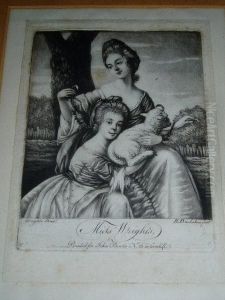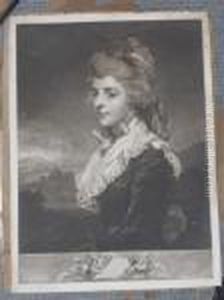Richard Brookshaw Paintings
Richard Brookshaw was an English engraver whose life and career spanned the second half of the 18th century into the early 19th century. Born around 1736, the specifics of his early life and education remain somewhat obscure, reflecting the often scant records of artists of the period outside the most famous. However, what is known is that Brookshaw emerged as a skilled practitioner of engraving, a form of printmaking that was highly valued for its ability to reproduce other artworks, illustrations for books, and portraits with fine detail and precision.
Brookshaw's work primarily involved mezzotint and stipple engraving, techniques that allowed for delicate gradations of tone and texture, making them ideal for reproducing the subtleties of paintings and drawings. This was a period rich in printmaking innovation, and Brookshaw contributed to the era's artistic achievements by producing engravings after the works of notable artists of his time. His subjects varied widely, from portraits to decorative pieces, reflecting the diverse demand for printed images in the period.
Despite the evident skill and productivity of his career, Richard Brookshaw did not achieve the lasting fame of contemporaries such as William Hogarth or Thomas Rowlandson. This may be in part due to the nature of engraving work, which, while requiring considerable technical skill and artistic sensitivity, often placed the engraver in a secondary role to the original artist. Yet, his contributions to the art of engraving during the late 18th century remain valuable, offering insights into the visual culture and aesthetic preferences of the era.
Brookshaw's career also illustrates the broader trends in British art and society at the time, including the growing market for prints among the middle class and the increasing interest in accessible forms of art. His works would have been part of the burgeoning public and private collections, contributing to the spread of artistic knowledge and appreciation beyond the elite circles that had dominated patronage in earlier centuries.
Richard Brookshaw died in 1804, leaving behind a legacy encapsulated in the plates and prints that continue to be studied and appreciated for their craftsmanship and historical value. While he may not be a household name, Brookshaw's work contributes to the rich tapestry of 18th-century British art, embodying the technical skill, aesthetic sensibility, and cultural dynamism of his time.



